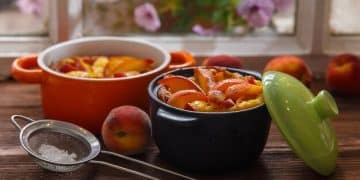Is Buying in Bulk Always Cheaper? A Data-Driven Analysis for Smart Budget Shopping

Buying in bulk can save money, but it’s not always the cheapest option; factors like storage, consumption rate, and potential waste must be considered to determine if bulk buying is truly cost-effective for your budget.
Is buying that mega-pack of toilet paper or the giant-sized bag of rice always the smartest financial decision? The allure of lower unit prices when purchasing in larger quantities is strong, but before you load up your cart, let’s analyze: Is Buying in Bulk Always Cheaper? A Data-Driven Analysis for Smart Budget Shopping can reveal the truth!
Decoding the Bulk Buying Myth
The promise of saving money is often the primary driver behind bulk buying. Retailers entice consumers with lower per-unit prices on larger quantities, leading to the assumption that bigger is always better. But does this hold up under scrutiny? Let’s delve into the factors that influence the true cost-effectiveness of bulk purchases.
Consider the initial appeal. A larger package often presents a significantly lower price per unit compared to its smaller counterpart. This is because manufacturers and retailers can reduce packaging and distribution costs per item when selling in bulk. However, the equation isn’t always that simple. flere factors come into play, potentially eroding the savings and even leading to financial losses.

Understanding Unit Price vs. Total Cost
Focusing solely on the unit price can be misleading. To accurately assess the savings, calculate the total cost, including storage, potential spoilage, and opportunity cost. Is that low unit price worth it if half the product expires before you can use it?
The Impact of Storage Space
Bulk items require ample storage space. If you live in a small apartment or have limited pantry space, storing those giant packages might be a challenge. Consider the potential cost of additional storage solutions, such as shelving or a storage unit, when evaluating the true cost of bulk buying.
- Evaluate your storage capacity: Do you have enough space to store bulk items properly?
- Consider storage costs: Will you need to purchase additional storage solutions?
- Factor in organization: Can you keep your bulk items organized and accessible?
In conclusion, while the lower unit price of bulk items is attractive, a comprehensive analysis of total cost, storage, and consumption habits is essential for determining whether bulk buying is genuinely economical. Often, smaller items or items on sale may have better value once all calculations are done.
The Pros of Purchasing in Large Quantities
Despite the potential pitfalls, bulk buying offers several compelling advantages. When done strategically, it can lead to significant cost savings, reduce shopping frequency, and minimize packaging waste. Let’s explore the benefits of buying in bulk when it’s done right.
One of the most significant advantages is the potential for cost savings. By purchasing items in larger quantities, consumers can often secure lower per-unit prices, especially on non-perishable goods and frequently used items.
Savings on Non-Perishable Goods
Non-perishable items like toilet paper, cleaning supplies, and canned goods are ideal for bulk purchases. These products have a long shelf life, reducing the risk of spoilage and maximizing potential savings.
Reduced Shopping Trips
Buying in bulk translates to fewer trips to the store. This saves time, reduces transportation costs, and minimizes exposure to impulse purchases. With less time spent shopping, you can focus on other important aspects of your life.

- Time Savings: Less frequent shopping trips free up valuable time.
- Reduced Transportation Costs: Save money on gas and transportation.
- Convenience: Minimize the hassle of frequent store visits.
Minimizing Packaging Waste
Bulk buying can contribute to environmental sustainability by reducing packaging waste. Larger packages often use less material per unit compared to individual items, leading to a smaller environmental footprint.
In conclusion, purchasing in large quantities provides tangible advantages such as significant cost savings on non-perishable goods, reduced shopping trips, and a positive impact on the environment by minimizing packaging waste. However, for these benefits to be realized, consumers must be strategic in their purchasing decisions by carefully matching actual needs to bulk amounts offered.
The Pitfalls of Stocking Up: When Bulk Backfires
While the allure of bulk buying is strong, it’s crucial to recognize its potential drawbacks. Overbuying, improper storage, and changing consumption habits can turn seemingly savvy purchases into costly mistakes. Let’s examine the common pitfalls of bulk buying and strategies to avoid them.
One of the primary risks is overbuying. It’s that irresistible urge to buy more than you need simply because the unit price is appealing. This can lead to wasted products, strained finances, and cluttered living spaces.
The Peril of Impulse Buys
Bulk buying often triggers impulse purchases, as consumers overestimate their needs or underestimate the shelf life of products. Careful planning and a realistic assessment of consumption patterns are essential to avoid this trap.
Spoilage is another significant concern, particularly with perishable goods. Buying large quantities of food items that expire quickly can lead to wastage and financial loss. Always check expiration dates and consider your consumption rate before purchasing in bulk.
Storage Challenges and Space Limitations
Improper storage can accelerate spoilage and render bulk items unusable. Make sure you have adequate storage space and conditions to maintain the quality and freshness of your purchases. Limited space can also make it difficult to organize and access bulk items, leading to inconvenience and potential waste.
- Monitor Expiration Dates: Regularly check expiration dates to prevent spoilage.
- Proper Storage: Use airtight containers and appropriate storage conditions.
- Accurate Consumption Assessment: Buy based on realistic consumption patterns, not perceived savings.
Furthermore, changing consumption habits can render bulk purchases obsolete. A sudden shift in dietary preferences, lifestyle changes, or simply growing tired of a particular product can lead to unused items gathering dust in your pantry. Regularly reassess your needs and adjust your bulk buying strategy accordingly.
To sum it up, bulk buying’s pitfalls, such as overbuying, spoilage due to inadequate storage, and alterations in consumption habits, highlight the necessity for meticulous planning. By carefully evaluating needs, storage capabilities, and consumption speed, consumers can successfully maneuver the complexities of large-volume purchasing, ensuring their bulk buying approach remains advantageous and economical.
Calculating Real Savings: A Step-by-Step Guide
To determine whether buying in bulk truly saves you money, a thorough calculation is essential. This involves comparing unit prices, factoring in storage costs, considering potential spoilage, and assessing your actual consumption rate. Let’s walk through the steps to calculate real savings.
Start by comparing the unit prices of the bulk item and its smaller counterpart. Divide the total price by the number of units to determine the cost per unit. This provides a baseline for assessing potential savings.
Factoring in Storage Costs
Next, consider any additional storage costs associated with bulk purchases. If you need to buy shelving or a storage container, factor that expense into the total cost calculation. Divide the storage cost by the number of units to determine the storage cost per unit.
Accounting for Potential Spoilage
Estimate the potential cost of spoilage. If you anticipate that a portion of the bulk item might expire before you can use it, calculate the value of the spoiled portion and add it to the total cost. This provides a more realistic assessment of savings.
- Unit Price Comparison: Calculate the cost per unit for both bulk and smaller items.
- Storage Cost Assessment: Factor in any additional storage expenses.
- Spoilage Estimation: Account for potential waste due to expiration.
Finally, assess your actual consumption rate. Buying in bulk only makes sense if you can consume the item before it expires or becomes obsolete. Multiply the unit price by your consumption rate to determine the true cost of the item over time.
By following these clear steps, consumers are better positioned to conduct an evidence-based analysis of buying in bulk, comparing unit prices, evaluating storage costs, taking into account likely spoilage, and evaluating exact consumption rates. By doing so, both impulse purchases and financial waste are prevented and only savings are gained.
Smart Strategies for Successful Bulk Shopping
To maximize the benefits of bulk buying and minimize potential risks, adopting smart strategies is crucial. This involves careful planning, strategic product selection, proper storage techniques, and mindful consumption. Let’s explore effective strategies for successful bulk shopping.
Begin with careful planning. Before heading to the store, create a detailed shopping list based on your actual needs and consumption patterns. Avoid impulse purchases by sticking to your list and resisting enticing deals on items you don’t need.
Strategic Product Selection
Choose products wisely. Focus on non-perishable items with long shelf lives, such as toilet paper, cleaning supplies, and canned goods. Avoid buying perishable goods in bulk unless you are confident you can consume them before they expire.
Mastering Proper Storage Techniques
Invest in proper storage techniques. Use airtight containers to keep food fresh and prevent spoilage. Store items in a cool, dry place away from direct sunlight. Rotate your stock to ensure older items are used first.
- Detailed Shopping Lists: Create a list based on actual needs to avoid impulse buying.
- Prioritize Non-Perishables: Focus on products with long shelf lives.
- Airtight Storage: Use containers to keep food fresh and prevent spoilage.
Also, practice mindful consumption. Be aware of your consumption rate and adjust your bulk buying strategy accordingly. Avoid overbuying, and regularly reassess your needs to prevent wastage. Consider sharing or splitting bulk items with friends or family to reduce the risk of spoilage.
Consumers who employ these smart measures can reap the benefits of bulk purchasing while significantly reducing the risks of wastage and unnecessary spending. Careful planning, strategic product choices, use of proper storage methods, and practicing careful consumption result in a purchasing strategy that is both economical and environmentally friendly. Therefore, all that is left is to enjoy the benefits of lower costs and fewer trips to the store.
Case Studies: Real-Life Examples of Bulk Buying
To illustrate the practical implications of bulk buying, let’s examine several real-life case studies. These examples highlight both the successes and pitfalls of bulk purchases across different household sizes and product categories.
Case Study 1: The Large Family: Family of six buying paper towels in bulk. They have ample storage space and high rate of paper towel consumption. End result: substantial savings and reduced shopping trips.
Case Study 2: The Single Minimalist
A single minimalist living in a small apartment purchased a large bag of rice only to find that they can consume that much food before it expires. The end result: Spoilage and wasted money.
Case Study 3: The Eco-Conscious Shopper
Family buys detergent in bulk only to find that their consumption rate is high; they reduce their plastic waste footprint and save money on frequent purchases. The end result: Environmental responsibility
- Large Family Success: High consumption rates and ample storage lead to significant savings.
- Minimalist Mishap: Low consumption and limited storage result in spoilage and waste.
- Eco-Friendly Triumph: Bulk buying of detergent reduces plastic waste and saves money.
These case studies demonstrate that the success of bulk buying hinges on aligning consumption patterns, storage capabilities, and product choices. While it can be a powerful tool for saving money and reducing waste, careful planning and realistic assessment are essential to avoid costly mistakes. Evaluate your unique circumstances and use these real-life examples to inform your bulk buying strategy.
| Key Point | Brief Description |
|---|---|
| 💰 Unit Price vs. Total Cost | Lower unit price isn’t always cheaper when considering storage and spoilage. |
| ⏱️ Reduced Shopping Trips | Bulk buying saves time and transportation costs by reducing store visits. |
| 🗑️ Avoiding Spoilage | Careful monitoring of expiration dates and proper storage can prevent waste. |
| 📈Consumption Habits | Assess consumption rate before buying in bulk. |
Frequently Asked Questions
▼
Non-perishable items with long shelf lives like toilet paper, cleaning supplies, and canned goods are the best choices. These items have a low risk of spoilage and can lead to significant cost savings over time.
▼
Compare the unit prices of the bulk item and its smaller counterpart. Factor in storage costs, potential spoilage, and assess your actual consumption rate to determine the true cost of the item over time.
▼
If you bought too much of an item, consider sharing or splitting the excess with friends, family, or neighbors to reduce the risk of spoilage and prevent wastage. This can help minimize financial loss.
▼
Bulk buying can reduce packaging waste compared to buying individual items, thus it promotes environmental responsibility. However, transportation and potential spoilage could offset these benefits, so thoughtful purchase planning is essential.
▼
Warehouse clubs like Costco and Sam’s Club are popular for bulk items. Also, online retailers frequently provide options for bulk grocery purchases, particularly for shelf-stable items, often with the added convenience of home delivery.
Conclusion
In conclusion, while the concept of bulk buying presents a clear, cost-effective avenue for some, it is crucial to assess all underlying factors before making a purchase. While the appeal of lower prices can have long-term advantages, the pitfalls of spoilage and storage need to be considered to ensure a sound financial decision.





